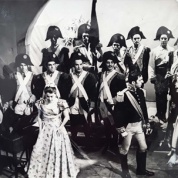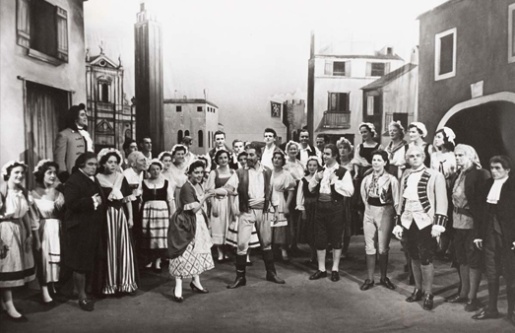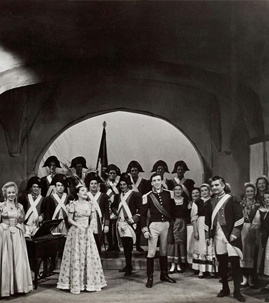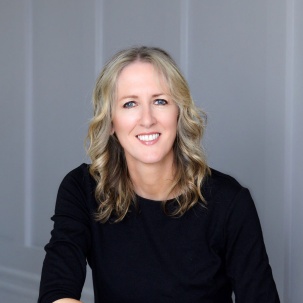Our history



Vision, determination, talent, bravery and innovation. This is the story of how we’ve grown from small local beginnings to our current status as a leading international opera festival. What a journey!
Compton Mackenzie, the renowned novelist and founder of Gramophone magazine, suggested to Tom Walsh that he stage an opera in Wexford, few could have imagined where the idea would lead.
But since the first ‘Festival of Music and the Arts’ took place in October 1951, Wexford Festival Opera has grown into one of the world’s leading opera festivals.
Creating extraordinary experiences, from the beginning, the Festival has made a name for itself by introducing audiences to unjustly neglected works, many of which have since found a place in the canon. We shine a light into the shadows to celebrate the masterpieces that slipped through the net of public consciousness. Through a process of discovery and reimagination, we reveal their beauty and truth to new audiences, enabling them to live and flourish. Each year we delve into the operatic archive for forgotten masterpieces.
Breathing new life into these forgotten masterpieces, for two weeks in late October and early November, Wexford Festival Opera stage a world-class festival of opera and performance, in our purpose built National Opera House and selective venues around Wexford town bring thousands of opera-lovers flocking to Wexford from all over the world.
But it hasn’t stopped there. Since Tom Walsh first guided the Festival to international success, Wexford Festival Opera has been blessed with a succession of talented and passionate artistic directors, all of whom balanced tradition with bold innovation.
In 2020 the Festival appointed Rosetta Cucchi as Artistic Director. Rosetta, an internationally-renowned pianist and director, who has had a regular presence at the Festival for more than 25 years as Assistant to the Artistic Director, first under Luigi Ferrari and later under David Agler. Her passion, knowledge and respect for Wexford and the Festival, places her in the fortunate position to honour Wexford’s traditions while simultaneously introducing a new and innovative vision.
But of course, the Festival’s success is due in no small part to Wexford itself and the hundreds of local, dedicated volunteer force who complete the Wexford experience.



An international reputation is hard won and a host of awards and accolades is a tribute to our consistently high standards. We stage world-class productions from a world-class National Opera House. Operatic excellence is our yardstick.
Over the years Wexford Festival Opera has championed the works of Donizetti, having staged more of his operas than any other opera company in the world outside his native Bergamo, sparked a Massenet revival, included a variety of daytime events to compliment the evening operas and established an international reputation both for attracting and for making major stars.
Over the past seven decades, the Festival has introduced Western audiences to baritone Sergei Leiferkus back in 1983, while tenors Juan Diego Floréz and Joseph Calleja and sopranos Mirella Freni, Elizabeth Connell, Angela Meade, Ermonela Jaho and mezzo-soprano Daniela Barcellona all made early appearances here.
Beyond the singing stars, the Festival has also offered a platform to emerging conductors like Vladimir Jurowski and Michele Mariotti as well as directors like Nicholas Hytner and Francesca Zambello.
Learn more about the Festival History in Karina Daly’s book, available to purchase at the Box Office
Explore the Festival archive which holds a wealth of material about the artists, productions and origins of our world-renowned opera house.
Wexford Festival Opera’s commitment to the highest artistic standards has seen it emerge as one of the world’s leading opera festivals, with an international reputation for excellence. Accolades include:
Judges' Special Recognition Award
Winner 2022
Business to Arts Awards
Best Opera
Winner - 9 Times
The Irish Times Irish Theatre Awards ( ITITA)
Best Festival
Winner 2017
International Opera Awards
Audience Choice Award
Winner 2015
for Silent Night (2014)
The Irish Times Irish Theatre Awards ( ITITA)
Best Rediscovered Work
Winner 2014
for Cristina, regina di Svezia
International Opera Awards
The theatre was closed for reconstruction throughout 1960 and re-opened with Verdi’s Ernani in September 1961. Dr Tom continued to exercise his skills into the 1960s but made the unexpected decision to step down after the 1967 season. The post was advertised and Walter Legge, the great record producer, was a surprise candidate. However, Legge had a heart attack (he lived on until 1979) and withdrew. Instead a 26-year-old former Trinity College student, Brian Dickie, was appointed; he had been with the Glyndebourne Touring Company and brought a fresh approach to programme planning. A new era of outstanding singing emerged, with emphasis on the French repertory, as well as the first operas in Russian (Ivan Susanin) and Czech (Ká’ta Kabonová). Jill Gomez, Ugo Benelli, Christiane Eda-Pierre, Dennis O’Neill, Sona Cervenka, Matti Salminen and Elfego Esparza all became familiar Wexford names.
His successor in 1974, Thomson Smillie, had been Publicity Officer at Scottish Opera and was the first to enunciate the three-opera format: a ‘singers’ opera’, a comedy and a ‘thinking piece’. Wexford’s Massenet revival began in 1965 with Don Quichotte. This was conducted by Albert Rosen who became the Festival’s most frequent conductor, with eighteen productions to his credit. Smillie added Thaïs in his opening season. In all, seven of his works have been staged, making Wexford a remarkable Massenet centre. One of the Festival’s most memorable productions took place in Smillie’s time in 1976: Britten’s The Turn of the Screw. Smillie moved on after 1978, becoming director of the Kentucky Opera in the USA. For the following three years producer Adrian Slack was Director and put his stamp on the Festival with Sesto Bruscantini in Crispino e la Comare (Ricci Brothers, 1979) and Carlisle Floyd’s tense Of Mice and Men (1980) which the composer attended.
Adrian Slack was followed by Elaine Padmore in 1982. She had supervised broadcasts from the Festival for BBC Radio 3. Her thirteen-year reign, only two shorter than Dr Tom’s, brought a wide spectrum of music and singers, and many remarkable productions. Marschner’s Hans Heiling caused quite a stir in 1983 and introduced Sergei Leiferkus to audiences outside Russia. Raul Gimenez, Cynthia Clarey, Bruce Ford, Curtis Rayam, Kristine Ciesinski, Karen Notare and Alison Browner were just some of the singers who thrilled audiences during her era. Other outstanding productions included newcomer Francesca Zambello’s two contributions: L’Assedio di Calais (Donizetti, 1991) with Alison Browner, and Chervichki (Tchaikovsky, 1993), when Alexander Anisimov made his Irish debut. There were Patrick Mason and Joe Vaneck’s two visits with La Cene della Beffe (Giordano), introducing a remarkable young American soprano, Alessandra Marc, and Prokofiev’s The Duenna, with Neil Jenkins in top form.
In 1999 Padmore went to Copenhagen, and then became Director of Opera at the Royal Opera House, Covent Garden, from which post she retired in 2012. She was succeeded by the then Director of the Rossini Festival in Pesaro, Luigi Ferrari. This brought a further change of style and direction, including Meyerbeer’ L’Étoile du Nord (1996), with the young Juan Diego Flórez in a small role, and the first Western European performance of Šarlatán (1998) by Pavel Haas, a Czech composer sent to a gas chamber in Auschwitz during the Holocaust.
Ferrari’s choices over his nine years ranged widely. As well as Italian works, he introduced Spaniard Enrique Granados (Maria del Carmen, 2003) and brought the first Polish opera to Wexford in 1999 (The Haunted Manor, Moniuszko). He cast such remarkable new voices as Joseph Calleja (1998 and 2000), Iwona Hossa, Tatiana Monogarova and Ekaterina Gubanova. For Si j’étais roi (Adam, 2000) he brought back a conductor who had been well received in 1996 with Šarká (Fibich) – David Agler.
In 2005 Agler succeeded Ferrari as Artistic Director. From the start he showed he was going to be adventurous and innovative, choosing Carlisle Floyd’s 1973 opera Susannah in his first season, only the fourth opera by a living composer in the Festival’s history. After his initial season the Theatre Royal was closed for two years when it was rebuilt completely. During the reconstruction the Festival moved to temporary homes, first to the venerable Dun Mhuire Hall and then to a magnificent tented structure in the spectacular grounds of Johnstown Castle. Agler’s programmes continued to be varied and imaginative and he would continue to present contemporary opera during his tenure, with Conrad Susa’s Transformations in the Dun Mhuire Hall the next year (2006) and then in 2008 for the new Theatre’s opening season came The Mines of Sulphur (Richard Rodney Bennett 1965) a work requiring large forces which would have been impossible in the old Theatre Royal, soon followed by The Ghosts of Versailles in 2009 (John Corigliano 1991). He would stage eight works by modern composers in the main house, plus other pieces in the Festival’s lively “ShortWorks” programme, in particular important one-act operas which would be too short for inclusion in the main Festival programme.
The magnificent new National Opera House was launched in September 2008 and Rimsky-Korsakov’s Snegurochka opened the first Festival in the new building on 16, October 2008 to great acclaim. The whole reconstruction project created an elegant, modern ambiance which has proved an outstanding success. There is increased seating in the auditorium with spacious foyers and a second smaller venue, as well as a much larger stage, extensive backstage facilities and a large orchestra pit on a hydraulic lift. This has made it possible to extend the range of works the Festival could present, as with Peter Ash’s The Golden Ticket in 2010 and the colourful operas of Frederick Delius – A Village Romeo and Juliet in 2012 and Koanga in 2015. The year 2010 also saw Virginia, the fifth Mercadante opera to be staged, a composer closely associated with the Festival since 1988; it featured Metropolitan Opera star Angela Meade’s European debut and won one of the nine Irish Times Theatre Awards the Festival has collected over the years. The 2013 production of the long-neglected Cristina, regina di Svezia by Jacopo Foroni from 1849 also drew wide international attention, winning the prize for Best Rediscovered Work at the International Opera Awards in 2014. In 2017, Wexford would go on to be named Best Opera Festival at this prestigious ceremony.
In 2014, the Irish Government designated the impressive new building as the Irish National Opera House, a title it carries with considerable pride. It also marked the centenary of the start of World War I and Agler secured the European première of Kevin Put’s 2011 Pulitzer-prize winning war drama Silent Night for that year’s Festival; based on a true 1914 story, it proved to be a deeply moving experience, creating an extraordinary effect in the Opera House. A number of co-productions have also featured during Agler’s tenancy including Ferdinand Hérold’s 1832 opera Le Pré aux Clercs, which was staged in 2015 as a co-production with the Opéra-Comique in Paris, and William Balcom’s Dinner at Eight in 2018 in association with Minnesota Opera.
David Agler announced he would retire in 2019, making him the second longest serving Artistic Director, only Dr Walsh served a year longer, at 16 years. In his final season he included a co-production with La Fenice, Venice: Vivaldi’s Dorilla in Tempe (1726) and the first opera by an Irish composer to be staged in the main programme. This was Andrew Synnott’s La Cucina, a curtain raiser to Rossini’s Adina (1826). The libretto was by the opera's director and the newly appointed Artistic Director, Rosetta Cucchi.
Rosetta first came to Wexford in 1995 as a répétiteur and became a regular at the Festival, being appointed Associate to the Artistic Director in 2005 and Artistic Director in 2019. She has directed four operas at Wexford, so she has a thorough and unique experience of the Festival. For her inaugural 2020 season, the 69th Festival, she planned a set of works with Shakespearean themes. Then Covid-19 struck, public gatherings were not allowed, and her Festival plans had to be put on hold. However, an enterprising online programme was created, including a version of Verdi’s Falstaff and a new work was created by Andrew Synnott, which was filmed with three different endings, What Happened to Lucrece. It was a very successful enterprise and an important contribution to life under lockdown.
Few people know that a unique primary source for the history and development of opera in Ireland over the last seventy-plus years is located a short distance from Wexford town. The Wexford Festival Opera archive is home to many original materials, including artists’ biographies, directors’ files, contracts, minutes of Festival committee meetings, programmes, scores, librettos, scrapbooks, posters, publicity materials and a valuable photographic collection. Opera recordings are stored on a range of media, from reels, cassettes and CDs to video and DVDs.
The archive provides a detailed insight into the development of the Festival from its inception in 1951 up to the present day. Research can be undertaken on Festival and theatre development, artistic administration, financial administration, public relations, collaborations with local organisations and fringe and associated events. There has only been one year in its long history – 1960 when renovations were carried out at the Theatre Royal – in which no opera festival was held in Wexford.
Wexford Library Headquarters continues to act as a repository for the Wexford Festival Opera archive, and a dedicated room houses the collection in the library’s premises in Ardcavan, Co. Wexford. Since the appointment of an archivist to Wexford County Council back in 2002, management of the archive has been the responsibility of Wexford County Archive, also based at Library Headquarters, Ardcavan. The county council archivist is responsible for managing the archive, facilitating researchers, overseeing their work, and organising a select display of items from the archive to coincide with the Festival each year.
Fresh material consignments are transferred to the archive annually as the opera festival continues to go from strength to strength. And Sir Compton MacKenzie’s observation back in 1967 about the Festival could without doubt also be applied to this priceless archive: ‘there is no other […] quite like it’.
Thank you to Wexford County Council, Wexford Library Headquarters and Wexford County Archive for your continued support.

The History of Wexford Festival Opera
by Karina Daly

Author Karina Daly
Explore more of our story
Delve deeper to find out more about out roots, our journey and our work today.







